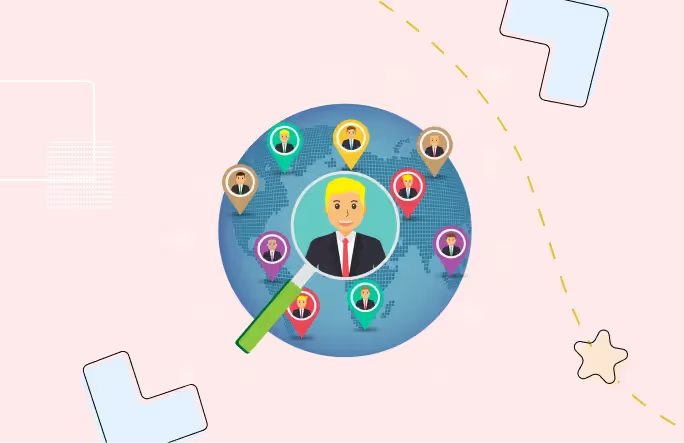In the words of Marc Benioff, Founder, Chairman, and co-CEO of Salesforce: "Acquiring the right talent is the most important key to growth. Hiring was - and still is - the most important thing we do."
Building a global brand demands hiring top international talent, but there are challenges too. For example, there are complex international labor laws, compliances, the need to understand the local culture and the job markets, to name just a few. But that does’t mean brands need to stop hiring globally.
In this post, we will explore global talent acquisition strategies. No matter where you want to hire, these strategies can help you hire seamlessly.
What are global talent acquisition strategies?
A global talent acquisition strategy is a plan designed by businesses to identify, attract, and hire the best talent from around the world. It focuses on leveraging global resources to fill skill gaps, enhance diversity, and drive innovation within the organization. This approach enables companies to access a wider pool of candidates, optimize their workforce for global operations, and stay competitive in the international market.
Read more: Global Human Resource Strategy
Why should companies need a global talent acquisition strategy?
There was a time when hiring meant putting up job advertisements in the local newspaper, conducting physical and telephonic interviews, and hiring suitable candidates from the same region. However, globalization has changed the scenario.
Today, brands are no longer bound by geographical borders. This means putting up a job advertisement in the local newspaper needs to be replaced by a more modern and inclusive global hiring strategy. If you’re still not using a global talent acquisition strategy, here are the reasons to do so.
1. Builds brand awareness
Building brand awareness is not just important to attract customers but potential employees, too. In the US alone, there are 7.3 million unfilled job openings. Which means there’s a huge gap between opportunities and talent available.
A well-defined global talent acquisition strategy is a powerful tool for building a better brand reputation and helps to attract better talents. A well-planned talent acquisition strategy helps to build reputation, puts across consistent brand messaging, and improves the brand’s visibility.
2. Promotes diversity and inclusion
Diversity and inclusion are essential factors for any business to thrive and establish itself as an inclusive workplace today. According to PWC, more than 75% of managers and global companies confirmed that diversity is vital in building a proficient workforce. A diverse workforce leads to enhanced innovation, problem-solving, and profitability.
A McKinsey survey said organizations with a more diverse workforce are 25% more likely to earn above-average earnings. It further noted that 'the higher the representation, the greater the possibility of outperformance.' Therefore, a global talent acquisition strategy fosters a rich blend of perspectives within teams and contributes to a culture of diverse landscape.
3. Increased knowledge of local markets
The success of companies operating across various countries largely depends on their understanding of the local culture, including its business practices, economic climate, market dynamics, labor laws, privacy, etc. It is vital to incorporate local input in a global talent acquisition strategy and ensure the global approach is tailored to local stakeholders and employees. A good understanding of the local market minimizes misunderstandings and improves the chances of success in diverse markets.
Top 7 global talent acquisition strategies for 2024
Each company has different hiring practices, and building your strategy to meet your requirements is advisable. However, these are some common strategies you might find helpful, irrespective of your hiring needs.
1. Create an in-house global talent pool
An in-house global talent pool or a diversified talent network can help you respond quickly to new demands. Build a repository of global candidate profiles who possess skills matching the job roles you hire for. Also, include candidates who express interest in collaborating with your organization. Having a database of the right global talents can help you speed up your recruitment process for key job roles.
2. Get to know regional markets
Learn everything about the local market before foraying into it. Recognize their unique labor laws, skill availability, and cultural dynamics. Connect with local recruiters to understand the local job market and the legal compliance. Armed with this information, create simple job descriptions with clear expectations, benefits, and compensation ranges to attract the best candidates.
3. Fine tune approach
It is essential to understand that talent acquisition tactics have to be market-specific. Employment through agencies is standard in some regions, while others rely on recommendations and personal connections. Therefore, research to identify what attracts the top talents in a specific region.
For example, in China, establishing strong relationships may attract the top talents while in the US, competitive pay and flexibility may work well in attracting the right talents. Hence, you must fine-tune your outreach techniques to connect with local talent and meet their specific expectations and preferences.
4. Employer branding
It is important to develop a powerful employer brand that spans borders. Talk about your company's values, culture, and commitment to employee development while creating your employer brand messaging. Candidates are drawn to brands that have established themselves through strong employer branding.
5. Onboarding program
A thorough onboarding program helps new employees smoothly align with the culture and expectations of your business. A quick and organized onboarding procedure encourages engagement, lowers staff turnover, and facilitates smooth integration with the process.
With Gloroots, you can onboard talents in a day. The platform offers automated contract generation and a dashboard to view the onboarding status of the candidates. It helps resolve issues (if any) and onboard faster, without roadblocks.
6. Offer learning and development opportunities
Apart from remunerations, employees also look for self-growth opportunities. You can demonstrate your dedication to employee development by providing opportunities for learning and improvement. These initiatives attract top talent and enhance retention, productivity, and performance. It benefits your business growth and the long-term success of your global team.
7. Create exceptional candidate experience
A positive candidate experience speaks well of your company's professionalism and also attracts other potential candidates. To make a lasting good impression on potential employees, you should streamline the application process, provide timely feedback, and keep lines of contact open. Remember, when your existing employees are happy with you, they become your biggest brand ambassadors, attracting other top talents.
Read more: Guide to Global Outsourcing
Top 3 global talent acquisition benefits
While there are several benefits of global talent acquisition, we consider these the top three.
1. Access to untapped talent pools
Global talent acquisition opens the gateway to talent pools inaccessible within local borders, infusing teams with diverse skills and perspectives. This infusion ignites innovation and fosters adaptable problem-solving, powering a competitive edge.
2. Cost-efficiency through global hiring
The global marketplace isn't just about geography; it's also about cost dynamics. Tapping into countries with lower cost of living (like Phillippines, China, Vietnam, etc.) drives substantial cost savings. Companies optimize their budget allocation by strategically hiring from regions where wages align with local economies and legal requirements while acquiring top-tier skills.
3. Fostering global perspectives and expansion
A team with various international experiences is invaluable as a company grows worldwide. These people provide first-hand knowledge of the social, political, and economic environments of their native nations. These resources act as essential assets when it's time to expand into new markets, providing a smoother entry into new regions and easing the route for expansion.
Challenges in global hiring
Incorporating global hiring in your business comes with common challenges that require careful consideration and mitigation. These potential challenges include:
1. Communication barrier
Clear and effective communication is vital for building a collaborative approach. However, time zone differences, physical distance, and language barriers can hinder clear communication between teams.
While communication tools like Slack and Zoom and project management tools like Trello and Notion can bridge the physical distances between teams, managers must also be proactive in fostering a culture of open communication among team members.
2. Not complying with foreign labor laws
Overlooking foreign labor laws can lead companies to legal liabilities, penalties, and reputational damage. Every country has its distinct regulations for employment. If an organization fails to comply with the laws during global hiring, it might face serious consequences.
Partnering with an EOR, however, can help overcome such compliance issues. For example, partnering with Gloroots can help you with employee and contractor onboarding without deviating from the compliance requirements. Our team of experts can efficiently manage payroll and taxes for your global workforce.
3. Ignoring diversity and inclusiveness of global hiring
Hiring diverse workforces fosters innovation and creativity. Each employee's background and experience add value to your business. Every employee brings their unique culture. Without an inclusive corporate culture, employees may feel disconnected from the organization. Therefore, it becomes vital to ensure that your corporate culture remains inclusive of all of your employees to make them feel welcome and free to bring their best selves to work.
4. Not offering competitive remuneration and employee benefits
Failing to offer competitive compensation and benefits can prevent top talent from considering opportunities. In a competitive global job market, an attractive compensation package reflects an organization's recognition of the skills and expertise sought.
5. Misclassifying employees as contractors or vice versa
Misclassifying employees as contractors, or vice versa, poses legal and financial risks. Conversely, labeling contractors as employees may result in disputes and legal issues.
For example, for intentional misclassification of employees as contractors, the IRS (Internal Revenue Service) may require organizations to pay back 100% of the FICA and income taxes that should have been withheld from the employee.
Hence, accurate classification is essential to ensure compliance and fair treatment, and an EOR can effectively solve this problem.
Wrapping Up
Building a strong talent acquisition strategy is critical to building a global employee base. However, doing it for the first time might be overwhelming.
Partnering with an employer of record like Gloroots can help you hire faster so that you can start operations without much delay. Gloroots does all the heavy lifting of compliance and paperwork, so that you can focus on operations. Plus, Gloroots saves you from paying in multiple currencies to your employees. You can pay in your home currency while your employees receive their compensation in their home currency through Gloroots.
To know more about us, connect with our experts!
FAQs
What is global talent acquisition?
Global talent acquisition refers to identifying, attracting, and onboarding skilled individuals from diverse locations to fulfill organizational staffing needs globally.
What are the ways to build a global talent acquisition strategy?
Here are four key ways to build a global talent acquisition strategy:
- Market Research: Understand regional job markets, labor laws, and cultural norms.
- Employer Branding: Create a compelling global image to attract top talent.
- Diverse Sourcing: Tap into varied channels and platforms for talent acquisition.
- Cultural Integration: Tailor strategies for each region's cultural context.
What are the four elements of global talent acquisition strategy?
The four key elements of a comprehensive global talent acquisition strategy encompass
- Establishing an accurate data foundation for confident decisions,
- Prioritizing employee experience to enhance engagement and longevity,
- Ensuring tax and legal compliance through continuous communication and
- Integrating technology solutions to streamline HR processes and enable strategic placements.
This multifaceted approach allows organizations to navigate the complexities of global talent acquisition with efficiency and success.

.webp)




























.webp)
























.webp)


.webp)


.webp)












